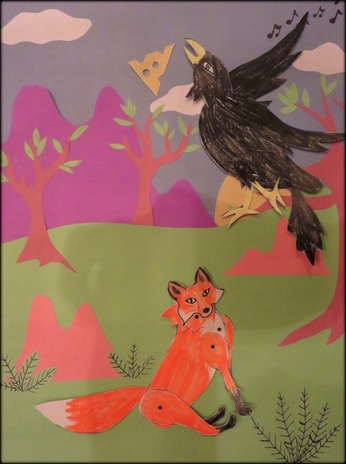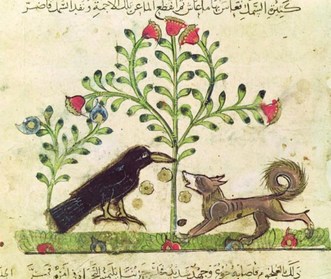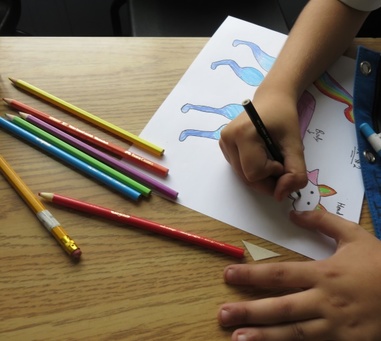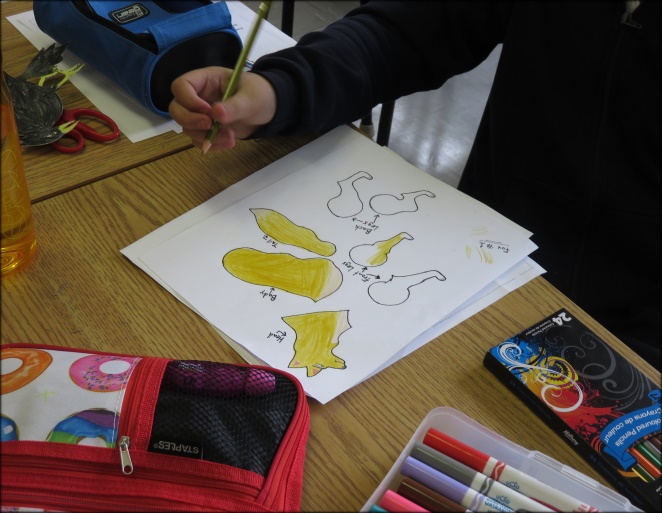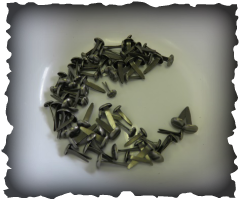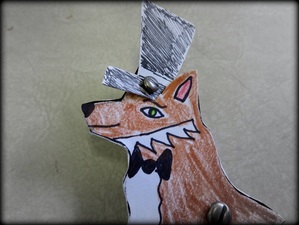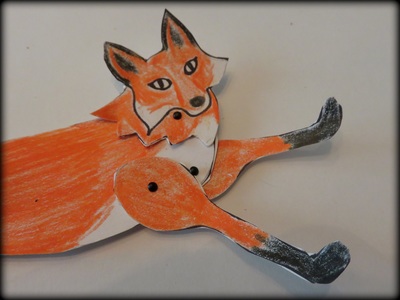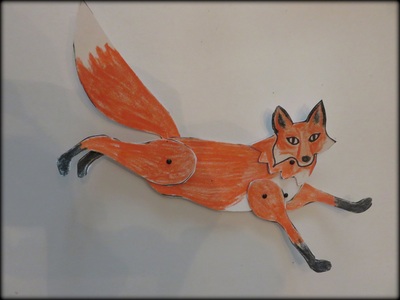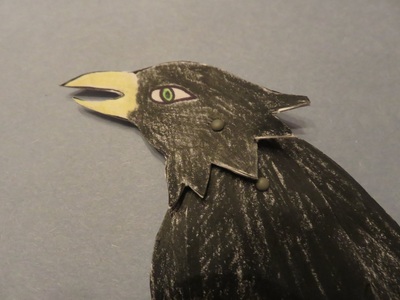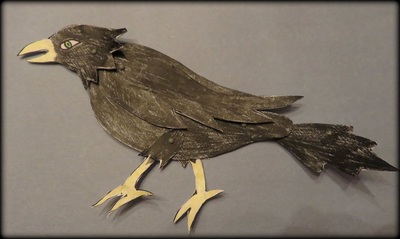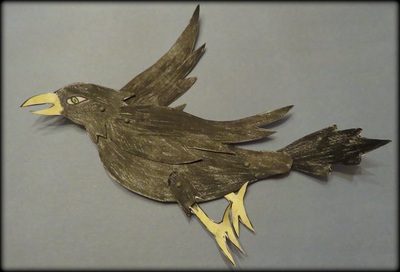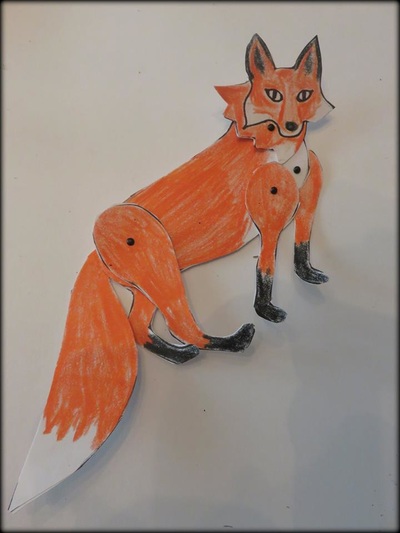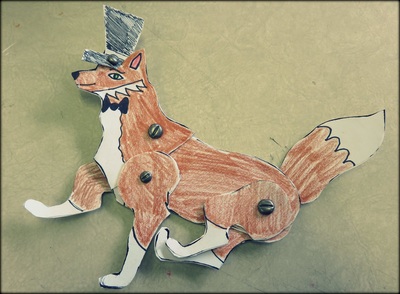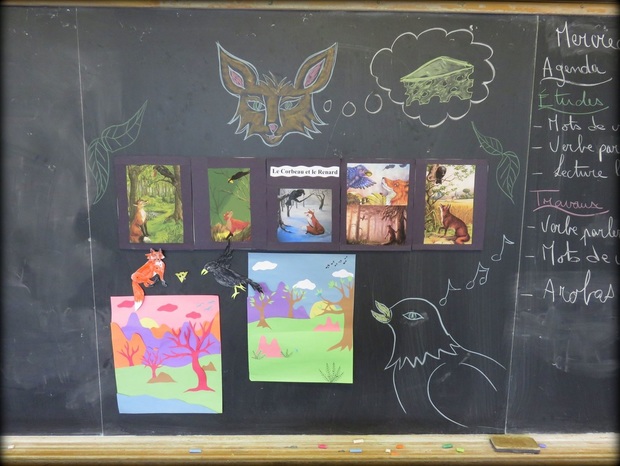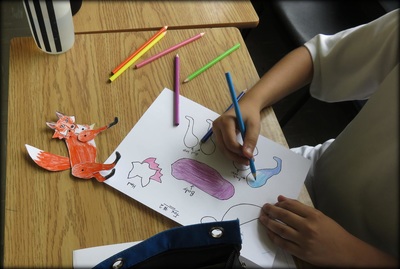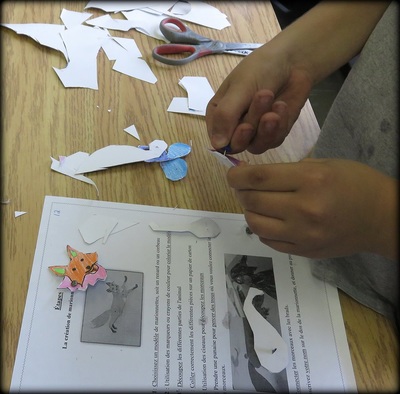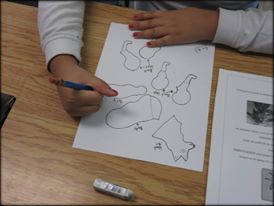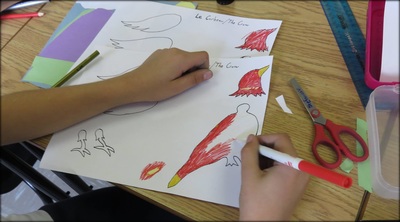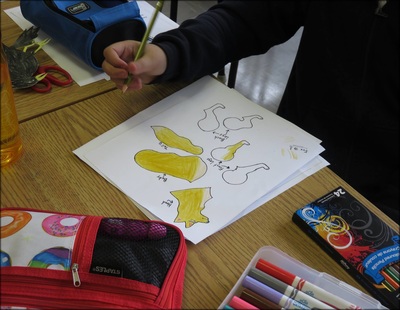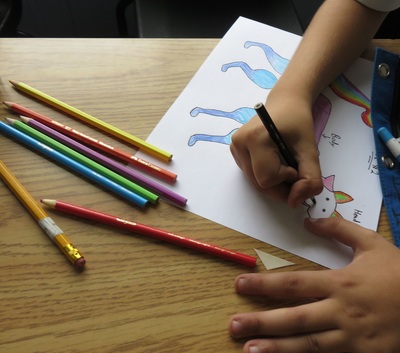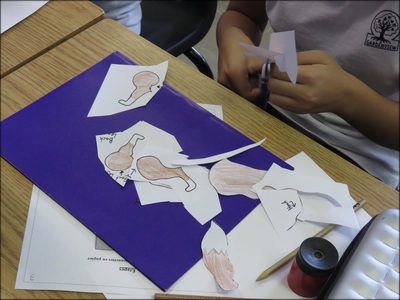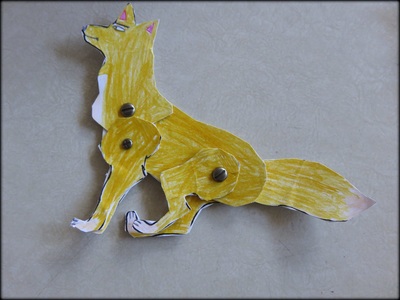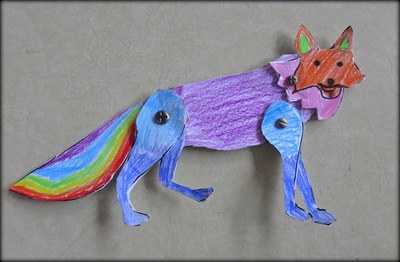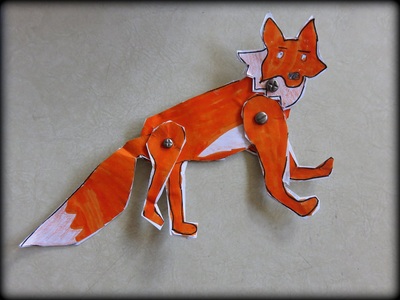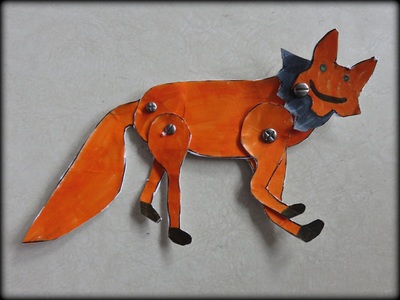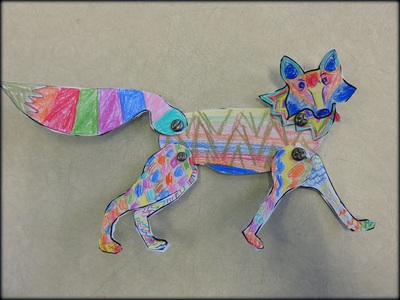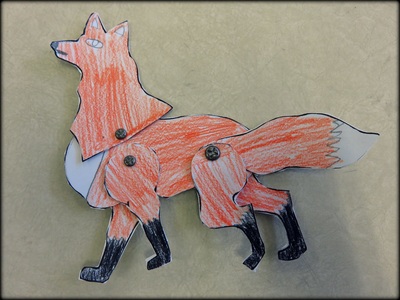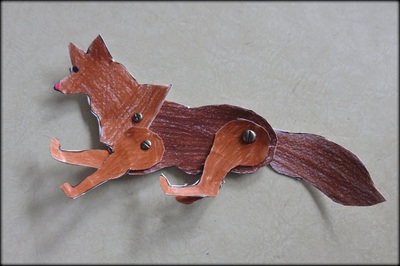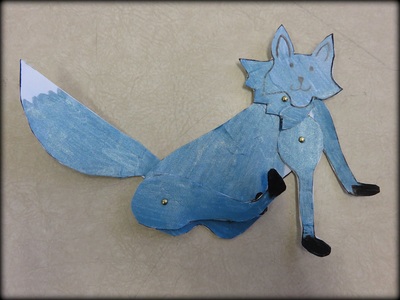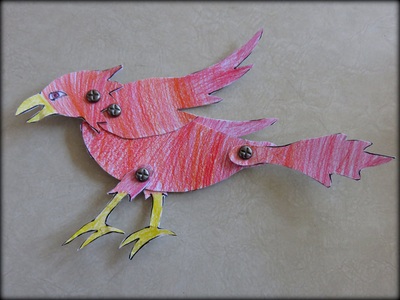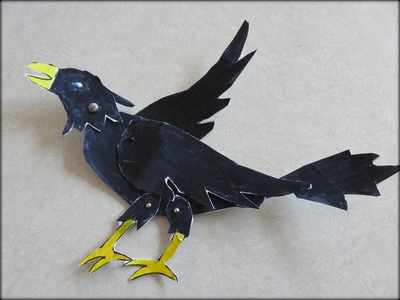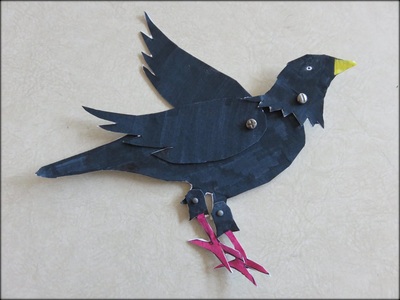- Sinthia Cousineau
- Ceramic Art
- Drawings
- Paintings
-
Photography
-
Art Education
-
Art & Adolescence
>
- Mural Project >
- Lesson: Eco Art
- Lesson: Decorating Fabric
- Lesson: Zentangles & Patterns
- Lesson: Social Media, consumerism & war
- Lesson: Bag Sculptures & Positive Body Image
- Lesson: Caricatures & political activism
- Lesson: Canadian Landscapes & Group of Seven
- Tattoo Art & Meaningful Images
- Lesson: Stenciling Street Art
- Lesson: Plaster Figures (grade 7-9)
- Photoshop Lesson
- Lesson: Value Scales
- Lesson Plan: Video Art
- Lesson Plan: Sound Art
- Lesson: GIF Project
- Lesson: Mashup Videos
- Art Education & Older Adults >
-
Art & Children
>
- Collage & other art Activities >
-
Drawing Activities with Kids
>
-
Pencil, Markers and Coloring
>
- Introductory Lesson
- Introduction Lesson: Egyptian Name Cartouche
- Reptile Zentangle Drawing >
- Illustrated Names
- Symmetrical Name Creatures
- Drawing from Autumn Still-lives
- Grid Drawing Technique
- Lesson: Alliteration Drawing
- Drawing: 3D Hands
- Leaf Drawing Collage
- Ancient Egypt Art
- Collaborative Doodle
- Drawing: Hidden Emotions Behind the Mask
- Scribble Drawing
- Drawing : Word Art
- Lesson Plan: Renaissance Invention Scroll
- Lesson: La Bande Dessinée
- Lesson: Optical Illusions
- Oil Pastels >
- Chalk & Soft Pastel >
- Charcoal >
-
Pencil, Markers and Coloring
>
-
Painting Activities with Kids
>
-
Acrylic Painting Lessons
>
- Acrylic Pouring
- Australian Dot Painting
- Blow Paint Technique
- Bubble Wrap Painting: Bee
- Pointillism Painting
- Funky Easter Rabbit
- Lesson: The Color Wheel
- Monochromatic Painting
- Painting: Birch Tree
- Leaf Painting
- Pumpkin Painting
- Painting: Rock Painting
- Squeegee Painting Technique
- Origami Inspired Painting
- Coffee Art
- Watercolor Activities >
-
Acrylic Painting Lessons
>
- Mixed Media Activities with Kids >
- Types of Art >
- History Lessons
-
Art & Adolescence
>
-
Art Therapy
- 3D Art & other mediums
- Videos
- Contact Me
Lesson
Fable Characters as Paper Puppets
Age Group: 10-13yrs
Time Frame: 3hrs
Lesson 2 of the Fables Unit
Time Frame: 3hrs
Lesson 2 of the Fables Unit
Question of Inquiry:
How can we represent characters from fables and stories through different artistic techniques and mediums?
“The Fox & the Crow: Paper puppets on Landscape Collage”
Rationale
Fables play an essential role in the art of story-telling for teaching children about morals. Fables involve themes and characters that appeal to children and the stories are often humorous. The characters are often played by animals that behave and talk like people, but maintain their animal traits. These stories involve animals that display human-like behavior. Through stories children develop there literary skills.
These stories were originally invented by a slave named Aesop, who was a famous story-teller in his time. Aesop lived in ancient Greece, and his stories were often used to entertain guests at parties. He was rumored to have a very ugly appearance, and he was often mistreated He would come up with stories that aimed to teach people a valuable lesson. His stories would eventually inspire Jean La Fontaine to also create children’s stories that aimed to teach morals.
The Fox and the Crow tells the story of a greedy and hungry fox that sees a crow with a piece of cheese in his beat. The crow eventually gets the piece of cheese by using flattery to get the crow to sing and drop the cheese. The moral this story teaches is “not to trust a flatterer”.
This lesson will allow students to create a fox or crow puppet which they can use to retell the story. They will create a forest landscape collage to be the setting of their story. Once they have completed their lesson they may use their puppets to re-enact the famous fable story.
These stories were originally invented by a slave named Aesop, who was a famous story-teller in his time. Aesop lived in ancient Greece, and his stories were often used to entertain guests at parties. He was rumored to have a very ugly appearance, and he was often mistreated He would come up with stories that aimed to teach people a valuable lesson. His stories would eventually inspire Jean La Fontaine to also create children’s stories that aimed to teach morals.
The Fox and the Crow tells the story of a greedy and hungry fox that sees a crow with a piece of cheese in his beat. The crow eventually gets the piece of cheese by using flattery to get the crow to sing and drop the cheese. The moral this story teaches is “not to trust a flatterer”.
This lesson will allow students to create a fox or crow puppet which they can use to retell the story. They will create a forest landscape collage to be the setting of their story. Once they have completed their lesson they may use their puppets to re-enact the famous fable story.
Learning Objectives
- To create a collage of a forest landscape using colored paper
- To learn how to overlap paper to give a perception of debt
- To create a paper puppet that can display motion.
- To learn the morals from the fable stories.
Visual Arts Competencies
Competency #1: “Creates personal images”
|
Competency #3: “Appreciates works of art”
|
|
|
Cross-Curricular Competencies
To solve-problems:
- Students will explore the concept of foreground, middle ground and background and how they can arrange papers to represent this concept.
- Students will explore different strategies involved in layering paper.
- Students will explore motion and how they can represent motion with their paper puppets.
- Students will explore how to attack paper puppets with brads, in order to make these puppets display motion.
To use creativity:
- Students will imagine their own landscape and make a collage to represent it.
- Students will design their own paper puppets, with the help of a template.
- Students may also be encouraged to create a puppet without the help of a template.
- Students will design a paper puppet and collage landscape that is original.
To adopt effective work methods:
- Students will construct a landscape that requires organizational skills, and they will attempt to waste as little paper as possible in the process.
- Students will create an art product in the given time assigned to them.
- Students will participate in the cleanup process.
“Grade 5 Students coloring their puppets”
Materials
For Educator:
- Prototypes of fox and crow paper puppets.
- Prototypes of a forest landscape collage.
- A copy of the Fable Story to read with the class.
For Students:
Prototypes
Lesson Sequence
Part 2: The Paper Puppet
Introduction: Duration: 2-5 minutes
- Remind the class about the fable story of “the fox and the crow”.
- Discuss puppetry with, and how it is possible to make puppets with paper.
- Show he class the prototype paper puppets of a fox and a crow,
- Pass the puppets around the class for students to see and play with.
Demonstration: Duration: 5 minutes
- Demonstrate the different steps required for the project
- Show the students the choice of templates they can use.
- Show them how to piece a hole in their puppet by using a thumbtack.
- Show students how to use a split pin to attach the pieces of the puppets together.
Work Time: duration: one hour and a half
- Place the different puppet templates on a table for students to choose.
- Call one team at a time to come up to pick a template and take a cardboard sheet.
- Students will work individually at their desks. Once students have finished gluing and cutting the different pieces of their puppet on the cardboard they could come to the material table and select a thumbtack and 3-4 split pins.
Note: They could return to their desk to finish making the puppet or stay at the materials table were the teacher can help them.
- Once the task is complete they will write their name on the back of the puppet and give it to the teacher.
Clean-up: duration: 2-5 minutes
- Inform students 5 minutes before cleanup so they can finish their current task
- Tell students to return extra materials to the supply desk and to recycle small pieces of paper or cardboard.
- Once students finish cleaning their desks they can help their peers or do homework.
Closure: duration: 2-5 minutes
- Ask students if they enjoyed the activity, and what part was most difficult.
- Display all puppets on the wall.
Project Steps
Introducing the Lesson
Grade 5 Students
Working on their Puppets
The Finished Paper Puppets
Grade 5 Class of Gardenview Elementary
Vocabulary
Background: The part of the picture plane that seems to be the farthest from the viewer.
Story: An account, narrative or tale of imaginary or real people and events told for entertainment.
Puppetry: The art of making puppets and presenting puppet shows
Manipulation: The way a puppeteer works or moves a puppet.
Fable: A short story, typically with animals as characters, teaching a moral lesson.
Example: The Fox and the Crow-The moral is, "Never trust a flatterer.”
Collage: An artistic composition made of various materials, such as paper glued on a surface.
Foreground: Part of a two-dimension artwork that appears to be nearest or in the “front” of the image.
Composition: The Overall placement and organization of elements in a work of art, as well as the interrelationships between individual elements.
Design: The plan, conception or organization of a work of art; the arrangement on independent parts to make an organized whole.
Two-dimensional: Having height and width but no depth.
Movement: The principals of design that deals with the creation of action.
Climax: A decisive moment that is of maximum intensity or is a major turning point in a plot.
Morals: A lesson that is taught through a fictional story.
Story: An account, narrative or tale of imaginary or real people and events told for entertainment.
Puppetry: The art of making puppets and presenting puppet shows
Manipulation: The way a puppeteer works or moves a puppet.
Fable: A short story, typically with animals as characters, teaching a moral lesson.
Example: The Fox and the Crow-The moral is, "Never trust a flatterer.”
Collage: An artistic composition made of various materials, such as paper glued on a surface.
Foreground: Part of a two-dimension artwork that appears to be nearest or in the “front” of the image.
Composition: The Overall placement and organization of elements in a work of art, as well as the interrelationships between individual elements.
Design: The plan, conception or organization of a work of art; the arrangement on independent parts to make an organized whole.
Two-dimensional: Having height and width but no depth.
Movement: The principals of design that deals with the creation of action.
Climax: A decisive moment that is of maximum intensity or is a major turning point in a plot.
Morals: A lesson that is taught through a fictional story.
Adaptations to Diverse Learners
- Give more time to students with special needs to complete the task.
- Set clear and structured guidelines, and explain these guidelines at the start of the activity and provide a written version of the guidelines.
- Help students with mobility disabilities to cut the paper and attach their pieces with the split pins.
- Encourage students to help each other.
- Prepare materials ahead of time for students with special needs.
- Clearly explain to the student with special needs what is expected and make sure they understand.
- Encourage children to help each other.
Proudly powered by Weebly
- Sinthia Cousineau
- Ceramic Art
- Drawings
- Paintings
-
Photography
-
Art Education
-
Art & Adolescence
>
- Mural Project >
- Lesson: Eco Art
- Lesson: Decorating Fabric
- Lesson: Zentangles & Patterns
- Lesson: Social Media, consumerism & war
- Lesson: Bag Sculptures & Positive Body Image
- Lesson: Caricatures & political activism
- Lesson: Canadian Landscapes & Group of Seven
- Tattoo Art & Meaningful Images
- Lesson: Stenciling Street Art
- Lesson: Plaster Figures (grade 7-9)
- Photoshop Lesson
- Lesson: Value Scales
- Lesson Plan: Video Art
- Lesson Plan: Sound Art
- Lesson: GIF Project
- Lesson: Mashup Videos
- Art Education & Older Adults >
-
Art & Children
>
- Collage & other art Activities >
-
Drawing Activities with Kids
>
-
Pencil, Markers and Coloring
>
- Introductory Lesson
- Introduction Lesson: Egyptian Name Cartouche
- Reptile Zentangle Drawing >
- Illustrated Names
- Symmetrical Name Creatures
- Drawing from Autumn Still-lives
- Grid Drawing Technique
- Lesson: Alliteration Drawing
- Drawing: 3D Hands
- Leaf Drawing Collage
- Ancient Egypt Art
- Collaborative Doodle
- Drawing: Hidden Emotions Behind the Mask
- Scribble Drawing
- Drawing : Word Art
- Lesson Plan: Renaissance Invention Scroll
- Lesson: La Bande Dessinée
- Lesson: Optical Illusions
- Oil Pastels >
- Chalk & Soft Pastel >
- Charcoal >
-
Pencil, Markers and Coloring
>
-
Painting Activities with Kids
>
-
Acrylic Painting Lessons
>
- Acrylic Pouring
- Australian Dot Painting
- Blow Paint Technique
- Bubble Wrap Painting: Bee
- Pointillism Painting
- Funky Easter Rabbit
- Lesson: The Color Wheel
- Monochromatic Painting
- Painting: Birch Tree
- Leaf Painting
- Pumpkin Painting
- Painting: Rock Painting
- Squeegee Painting Technique
- Origami Inspired Painting
- Coffee Art
- Watercolor Activities >
-
Acrylic Painting Lessons
>
- Mixed Media Activities with Kids >
- Types of Art >
- History Lessons
-
Art & Adolescence
>
-
Art Therapy
- 3D Art & other mediums
- Videos
- Contact Me
